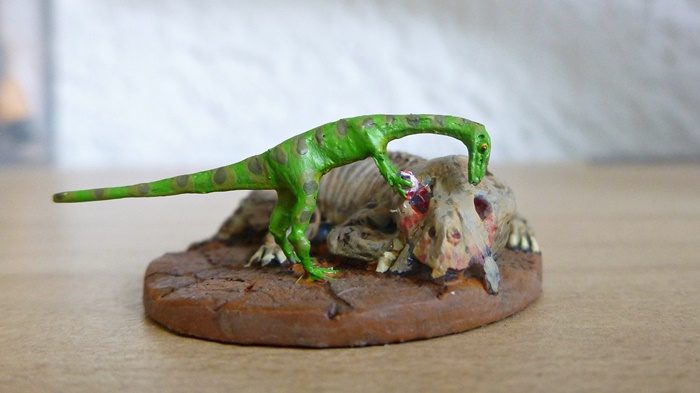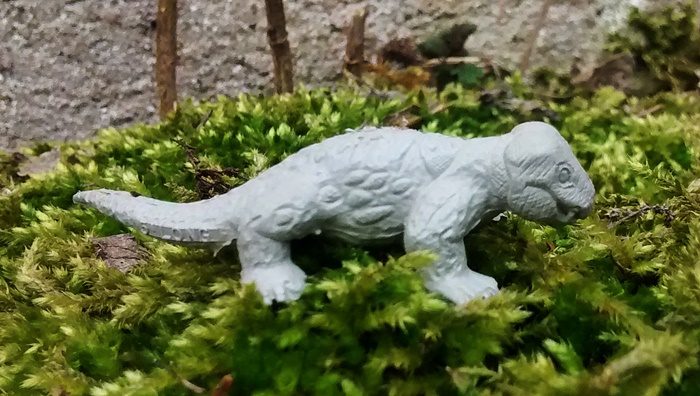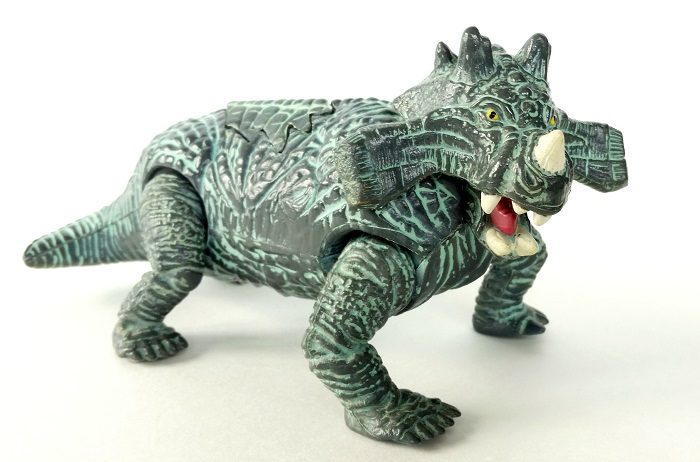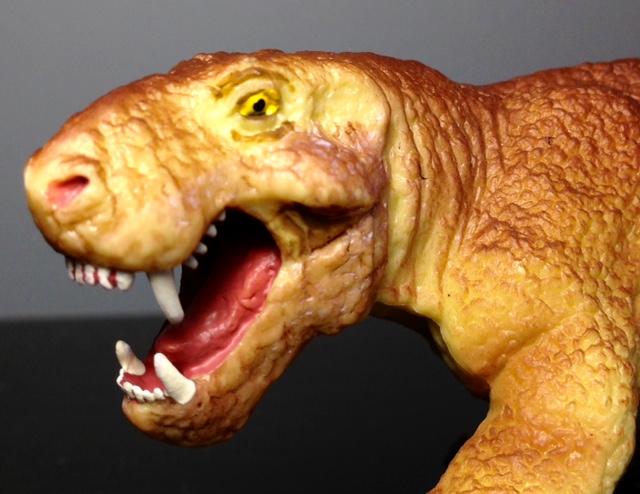Time has come to introduce you to another gorgeous (and gory) model by our forum member MIXVS MINIMAX, the all time favorite Triassic theropod Coelophysis. As with all of the models in this line, the figures are scaled to 1:72, rendering this comparably small dinosaur a tiny gem that could fit onto a stamp.
Classification: Therapsid (non-mammal)
Review: Cynognathus (Marx)
Review: Dinogorgon (Conquering the Earth by Schleich)
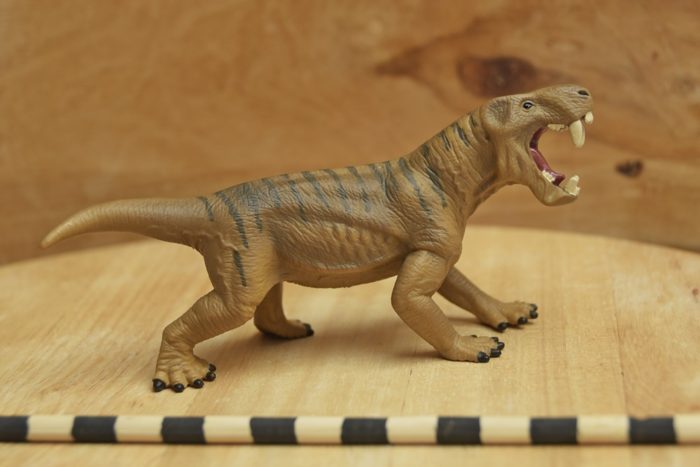
Permian synapsids are not a very popular group of animals and if a toy company does choose to create one, it is almost invariably a Dimetrodon. Few companies dare to make figures, let alone toys, of any other species from this ancient and fascinating group, despite the great variety contained within it.
Review: Dinosaur Boxset 2 (Toyway)
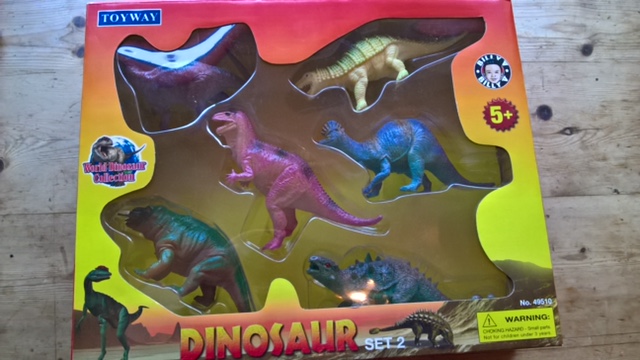
We’ve all seen them. The crude dinosaur toys that you get in small museum shops for extremely cheap prices, normally just bought by parents to keep their children quiet for a while. The last thing you’d expect is to put six of these together and sell them as a box set.
Review: Estemmenosuchus (CollectA)
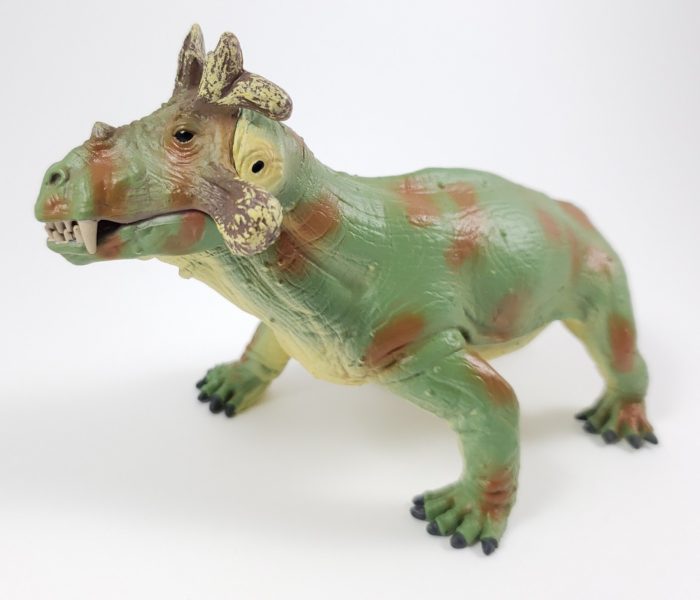
Review: Estemmenosuchus (Jurassic Park by Kenner)
Review: Estemmenosuchus (Wild Safari by Safari Ltd.)
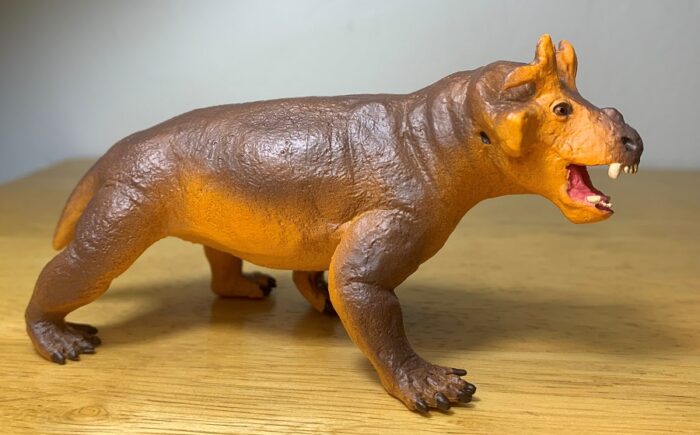
My introduction to Estemmenosuchus came from the 1994 episode of Paleo-World titled “Tail of a Sail”, which was about Dimetrodon and other synapsids, their evolution, and how they relate to mammals. Estemmenosuchus was only featured briefly via images of its skull and a couple pieces of paleoart but that was enough for me to become enamored with this animal and to help broaden my appreciation for prehistoric life beyond the Mesozoic.
Review: Guanlong vs. Lystrosaurus (Jurassic World: Chaos Theory, Epic Evolution Danger Pack by Mattel)
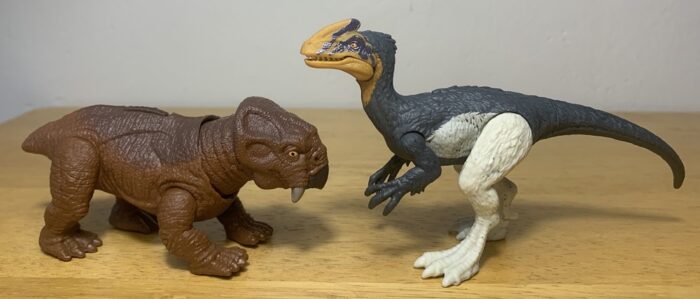
Recently, Mattel has started dabbling with small-figure two packs, first with an Eoraptor vs. Stegouros pairing and then with the set we’re looking at today, Guanlong vs. Lystrosaurus. I think these two packs are a fantastic idea and hope that Mattel will produce more of them in the future.
Review: Inostrancevia (Wild Safari by Safari Ltd.)
Review: Jurassic World Dominion Minis part 2 (Jurassic World by Mattel)
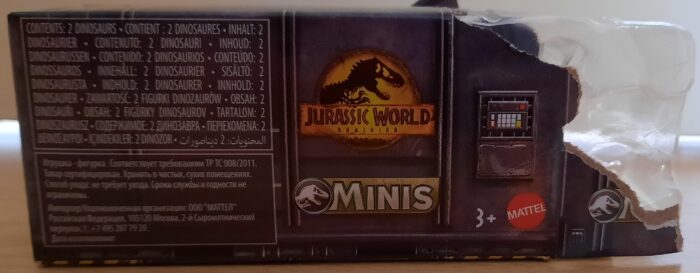
Well, I’ve shown you the worst of this line, let’s waste no time and get straight on to the best of them!
Starting off the top half is everyone’s favourite three horned herbivore Triceratops. This features one of the best poses of the lot (something I haven’t talked at length about as most the figures are in a generic standing pose), an aggressive fight pose, all the better when you have two to joust with.
Review: Kannemeyeria (3D Print by Mike Eischen)
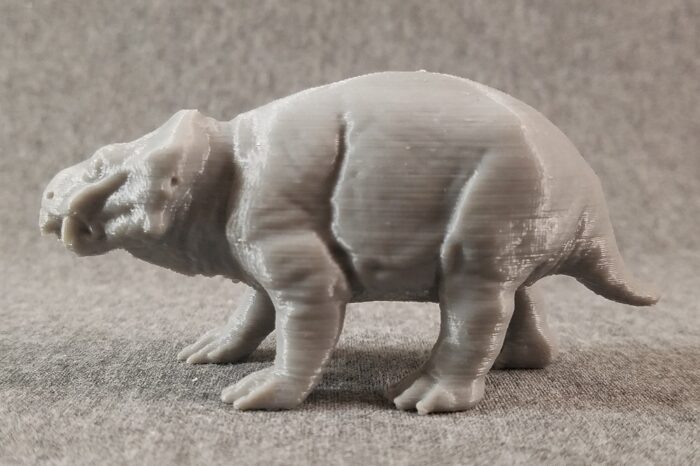
Dinosaurs weren’t the first giant plant-eaters to roam the Earth; that frontier was pioneered first among vertebrates by the dicynodonts, a group of tusked therapsids (the clade which includes modern mammals) which survived the Permian Mass Extinction and lasted to the end of the Triassic period. They ranged widely in size and distribution, from the diminutive Diictodon, to the pervasive Lystrosaurus, to giants like Lisowicia and Kannemeyeria.
Review: Keratocephalus (DinoWaurs Survival by One2Play)
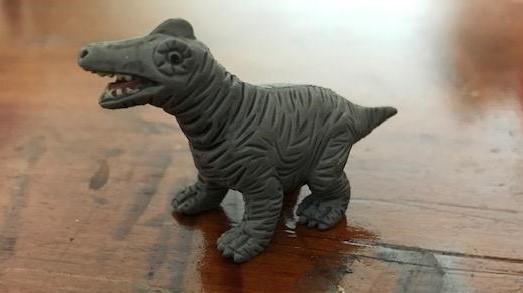
Review and photos by Angel Vega (paleoteen13), edited by Suspsy
When it comes to synapsids, Dimetrodon is the animal that make its appearance in toy form the most. Many figures of this animal have been appeared over the years, but other few synapsids have been produced by toy companies.

